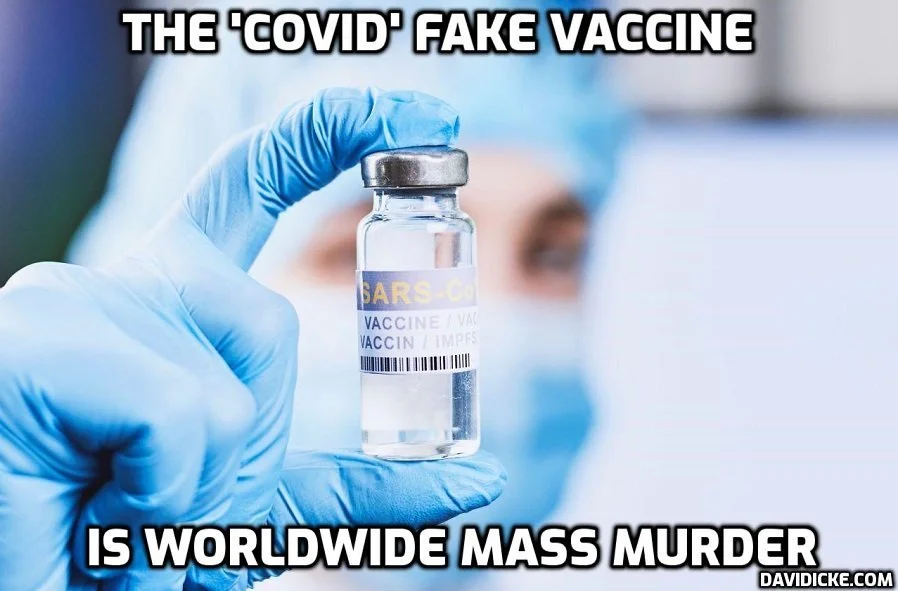Engineering Study Estimates COVID Injections Have Killed 150,00 People in the US. The Injections Kill More People Than They Save. Thus, 2 Separate Conditions to Stop the injections Have Been Satisfied
/“Estimating the number of COVID vaccine deaths in America” From [HERE] By Steve Kirsch, Jessica Rose, Mathew Crawford
Last update: December 24, 2021: Added excess death study so there are 9 ways to get to >150K Americans killed by the COVID vaccines
Abstract: Analysis of the Vaccine Adverse Event Reporting System (VAERS) database can be used to estimate the number of excess deaths caused by the COVID vaccines. A simple analysis shows that it is likely that over 150,000 Americans have been killed by the current COVID vaccines as of Aug 28, 2021.
At this point, two separate stopping conditions have been satisfied:
The vaccines kill more people than they save
The vaccines have killed over 150,000 Americans so far.
This is an engineering estimate This is an engineering analysis, not a strict scientific analysis.
What I mean by this is that our objective is to use all the available data and our own expert judgement in interpreting that data in a reasonable way in an attempt to get an accurate estimate.
For example, one analysis we reference said that up to 86% of VAERS deaths could be caused by the vaccine and 14% could not be. However, we know more about the causes of death after vaccination than someone who doesn’t understand the mechanisms of action of the vaccine and common side effects reported by victims. So we took the high end of the estimate as being closer to the truth.
Similarly, critics delight in saying that the English translation of the Schirmacher article says he estimated that between 30% to 40% of the bodies he examined died from the vaccine. However, we know from personal contacts that the 30% to 40% is a floor.
Similarly, using anaphylaxis as a proxy for the URF was chosen because in our judgement, anaphylaxis should always be reported at a higher rate than deaths. It’s the best-case adverse event. So calculating a URF from anaphylaxis yields a value that should always underestimate the number of actual events when applied to any event (such as death). Nobody who has disputed this choice has produced any data at all that supports their hypothesis that our assumption wasn’t correct; they just use hand-waving arguments.
So all this extra knowledge is included in interpreting the data.
Because we validated our death estimates against the analysis of different datasets done by different people, we have high confidence our estimates are reasonable.
It is easy to criticize every single method and to tell us “you can’t do that” or “you have to use DB-RCT data” or other objections.
More constructive would be for our critics to come up with their estimate and provide the 7 independent ways they validated that their estimates were valid. And then show that all 8 of our methods are flawed. Then we can simply compare which analysis better fits the observed data.
Nobody seems to want to do that for some odd reason. We can’t fathom why...
Our research is supported by the peer reviewed
literature
Our estimate is supported by multiple papers in the peer-reviewed scientific literature including:
Why are we vaccinating children against COVID-19? by Ron Kostoff
“Compared with the 28,000 deaths the CDC stated were due to COVID-19 and not associated morbidities for the 65+ age range, the inoculation-based deaths are an order-of-magnitude greater than the COVID-19 deaths!”
The Walach paper found the same thing: that the vaccines harm more people than they save. It has now been re-published in Science, Public Health Policy and the Law which is a peer-reviewed medical journal. The Walach paper appears in this issue along with a scathing editorial by the journal editor talking about how the paper authors were mistreated by the scientific community.
Critical Appraisal of VAERS Pharmacovigilance: Is the U.S. Vaccine Adverse Events Reporting System (VAERS) a Functioning Pharmacovigilance System? By Jessica Rose. “Using this URF for all VAERS-classified SAEs, estimates to date are as follows: 205,809 dead, 818,462 hospitalizations, 1,830,891 ER visits, 230,113 life-threatening events, 212,691 disabled and 7,998 birth defects to date [39]."
Note that in this paper, the 205,809 deaths were not categorized into background deaths and excess deaths. We do that calculation in this paper. The point of this paper is she determined a URF of 31 using a very conservative method which determines a lower bound on the URF. Even with a URF of 31, the death toll is horrendous, and as we show in Risk benefit by age of the COVID vaccines, virtually all these deaths are “excess” deaths.
And other independent studies such as:
Vaccine death report
The VAERS database is the only pharmacovigilance database used by FDA and CDC that is accessible to the public. It is the only database to which the public can voluntarily report injuries or deaths following vaccinations. Medical professionals and pharmaceutical manufacturers are mandated to report serious injuries or deaths to VAERS following vaccinations when they are made aware of them. It is a “passive” system with uncertain reporting rates. VAERS is called the “early warning system” because it is intended to reveal early signals of problems, which can then be evaluated carefully by using an “active” surveillance system.
Those who believe the FDA mantra that you cannot use VAERS to determine causality, should start by reading this editorial: If Vaccine Adverse Events Tracking Systems Do Not Support Causal Inference, then “Pharmacovigilance” Does Not Exist.
There are effectively two separate determinations:
What is the number of “excess deaths” which is the total # of deaths from this vax - # of
deaths normally expected from the typical vaccine. Causality plays no role whatsoever in
determining this number.
Ascribing a cause to the excess deaths. Were these excess deaths caused by the
vaccine or by something else?
The detailed steps are:
Determine the under-reporting factor (URF) by using a known significant adverse event
rate
Determine the number of US deaths reported into VAERS
Determine the propensity to report (PTR) significant adverse events this year
Estimate the number of excess deaths using these numbers
Validate the result using independent methods
Determining the VAERS under-reporting factor
(URF)
One method to discover the VAERS under-reporting analysis can be done using a specific serious adverse event that should always be reported, data from the CDC, and a study published in JAMA.
Anaphylaxis after COVID-19 vaccination is rare and occurs in approximately 2 to 5 people per million vaccinated in the United States based on events reported to VAERS according to the CDC report on Selected Adverse Events Reported after COVID-19 Vaccination.
Anaphylaxis is a well known side effect and doctors are required to report it (see FDA Fact Sheet at the top of page 10) because it is considered a “severe adverse reaction.” It occurs right after the shot. You can’t miss it. It should always be reported.
A study at Mass General Brigham (MGM) that assessed anaphylaxis in a clinical setting after the administration of COVID-19 vaccines published in JAMA on March 8, 2021, found “severe reactions consistent with anaphylaxis occurred at a rate of 2.47 per 10,000 vaccinations.” This rate is based on reactions occurring within 2 hours of vaccination, the mean time was 17 minutes after vaccination. This study used “active” surveillance and tried not to miss any cases.
When asked about this, both the CDC and FDA sidestepped answering the question. Here’s the proof at the CDC (see page 1 which incorporates the CDC response to the original letter on pages 2 and 3).
As noted in the letter, this implies that VAERS is under-reporting anaphylaxis by 50X to 123X. The CDC chose not to respond to the letter.
Is the anaphylaxis under reporting rate a good proxy for reporting fatalities? Since anaphylaxis is such an obvious association, one could argue that the rate would be a lower bound. Others would argue that deaths are more important and would be more reported than anaphylaxis.
We don’t know, but it doesn’t matter because this is just an estimate to get to a ballpark figure. Since there are 5 other estimates, if we are wrong, we’ll know pretty quickly. Lacking a more definitive method, we go with this as our “best guess” in the meantime. We are working on a clever way to determine the fatality URF directly which will be a good “double check” on our estimate.
In general, most of us think It is therefore entirely reasonable to assert that deaths are reported even less frequently than anaphylaxis since deaths are not as temporally proximal to the injection event.
The MGH study used practically identical criteria as CDC used in its study to define a case of anaphylaxis.
We ran the numbers ourselves and confirmed this.Therefore, a conservative estimate (giving the government the greatest benefit of the doubt) would use 50X as the under-reporting rate.
However, after the MGH study was published, one doctor pointed out that doctors were more careful to avoid anaphylaxis; there was more careful screening of people likely to have anaphylaxis, and they were advised to see their allergist and take more precautions prior to vaccination. This sort of thing would overstate the numbers above. [MORE]








































































































































































































































































